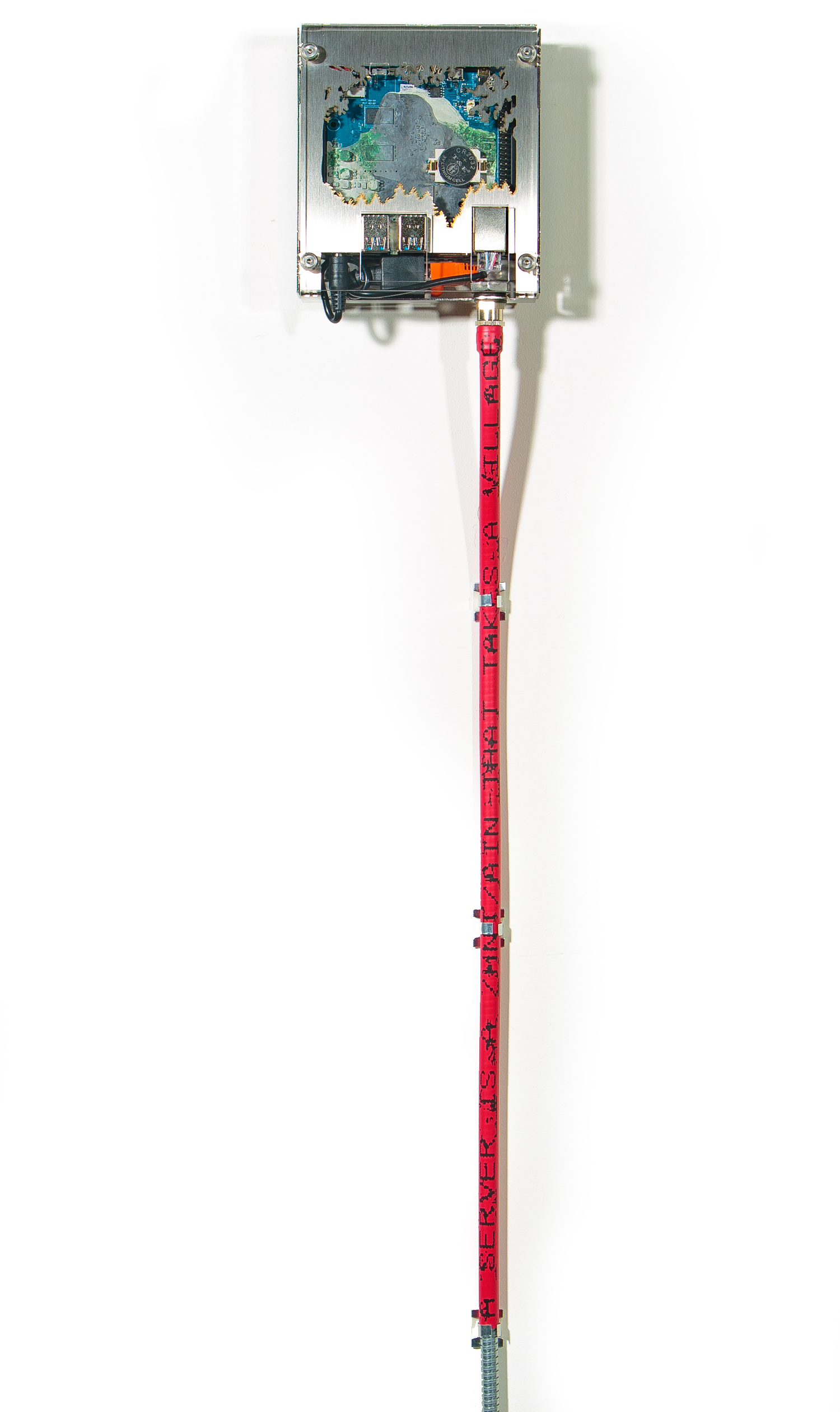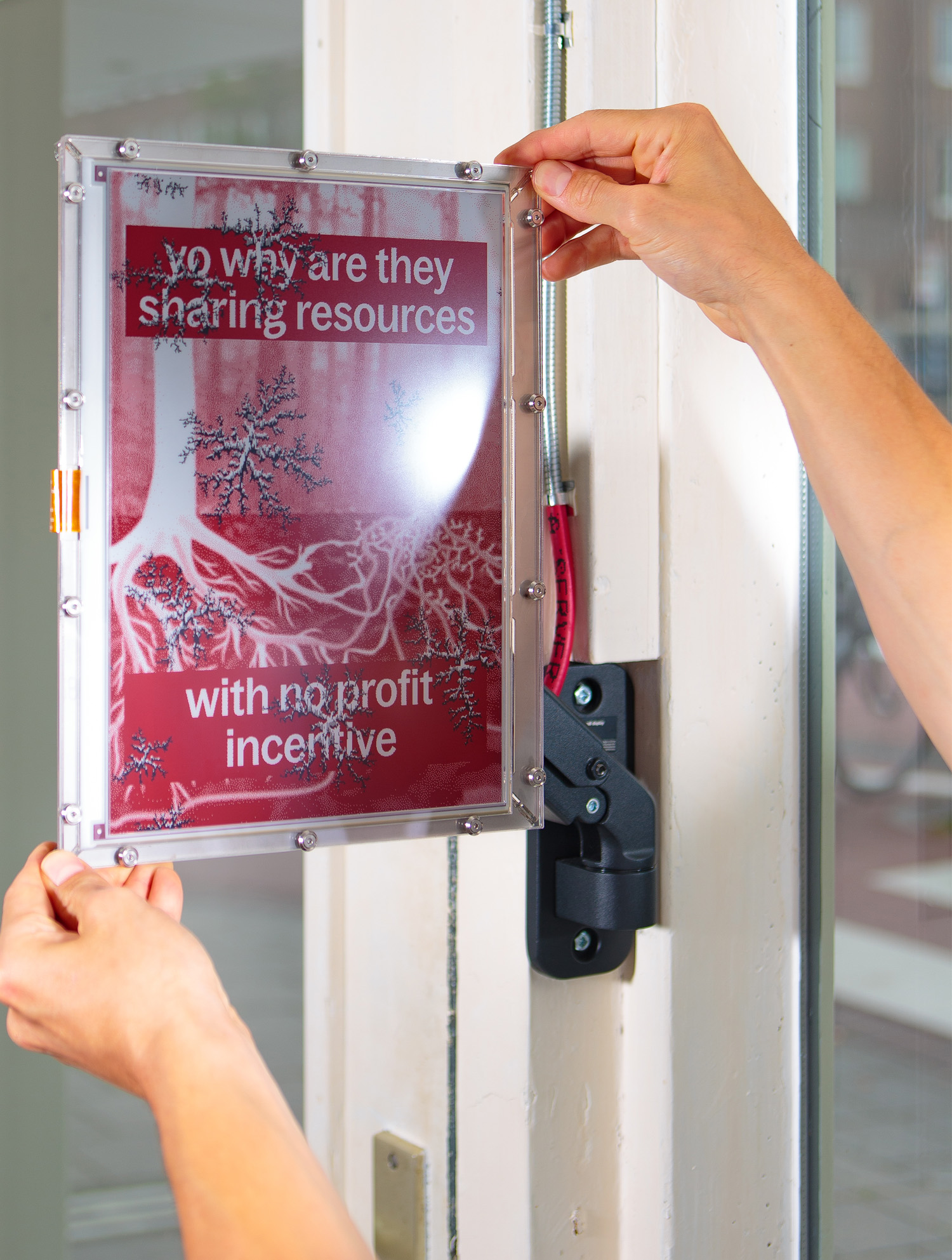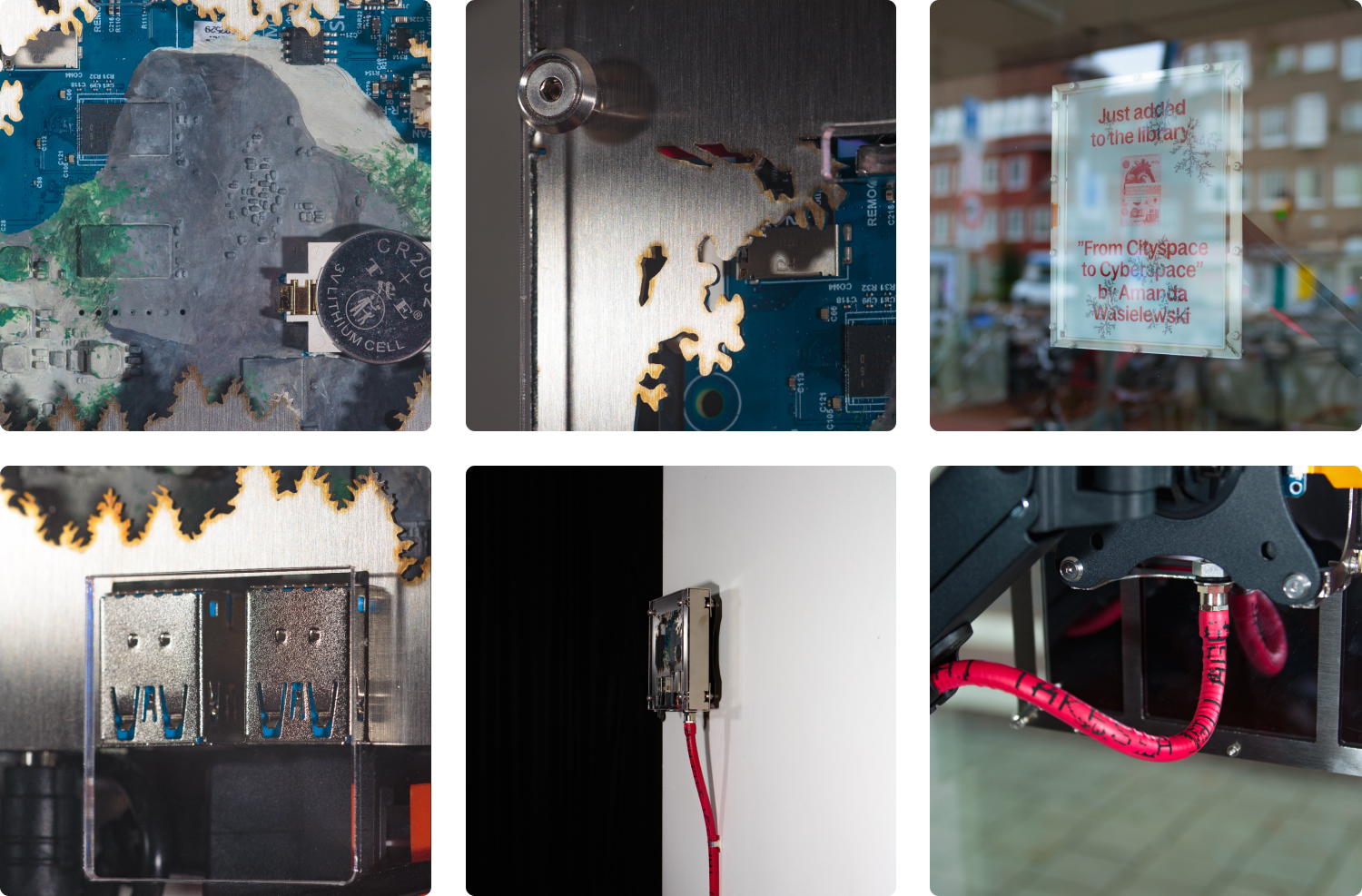[ AE-001 ] Social Server
Can the internet's infrastructure bring us back together?

For our first Applied Experiment, artist Lukas Engelhardt created a server that's only accessible when users are together in the same space. A permanent installation titled:
A Server Is a Mountain That Takes a Village


The project is inspired by the physicality of the internet. In the age of the cloud, we forget that the internet consists of mountains of metal elsewhere.
Rather than hiding this, the server installed at post-office in Amsterdam leans into its material reality. As present IRL as it is URL, it demands people to get together and become physically present in return.
Forcing people offline to get together online.


Feature 1: The "password" is multiple people being present.
The server demands people get together as that is the only way it can be accessed.
While it can be "read" or downloaded from anywhere in the world, like most servers, it's the chance to add to it, to upload, that requires physical presence.
Only when multiple people are on the local WiFi of the community space, can it be uploaded to. Meanwhile a blinking red light indicates activity and encourages users to strike up a conversation about what they might be uploading.

Feature 2: Without care,
the server’s contents decay.
The server also allows its users to upload a single shared expression: an image that is reflected both on the server's online window as well as on an e-ink display in the offline window of the space.
But if not cared for, this collective expression (requiring multiple users in the space to be refreshed) will decay over time. Server-side, the image increasingly deteriorates every few hours until, after a few days, the image has fully disappeared.
This creates another demand on users to connect IRL; to not only keep the image updated and legible to the wider world, but to shape their sense of community.

Related Research
APOSSIBLE is interested in the potential of intentionally adding friction to technology. There are undeniable benefits to file-sharing and digital visual expressions, but the physical reality this relies on should be a feature, not a bug.
Rather than smoothing out every inconvenience, and outsourcing it to people we don't see or think about, we could embrace it. In fact, championing the upkeep this infrastructure requires is the kind of social activity we so often fear the internet is flattening. Online connections in tandem with offline ones.
As APOSSIBLE we will continue to expand our research into these ideas of intentional friction and communal computing. For now we leave you our reading list to research along with us:
- [ essay ] 2022
New Dependencies
by Lukas Engelhardt
About the capacity for action in both digital and physical environments when reusing and adapting infrastructures and materials. - [ manifesto ] 2013
A Feminist Server
by Constant
A set of criteria and rallying cry for situated technology "run for and by a community that cares enough for her in order to make her exist." - [ wiki ]
Permacomputing
by anonymous
Advocates for technology that operates at human scale, emphasizing local community control, autonomy, and sustainability. - [ book ] 2015
Reclaiming Conversation
by Sherry Turkle
Explores how digital technologies undermine fulfillment by displacing face-to-face interaction. - [ paper ] 2005
Sharing intention
by Tomasello et al.
Examines the unique human capacity for and benefits of people cooperating toward shared goals. - [ paper ] 1995
Designing Calm Technology
by Mark Weiser and John Seely Brown
Principles for tools that meet their purpose without overwhelming users or presenting tradeoffs to other important dimensions of life.
For more follow Lukas Engelhardt or where the project is installed.
- Project Lead
Lukas Engelhardt - Photographer
Tommy Smits - Installed In
post-office - Supported as part of
APOSSIBLE Applied Experiments
